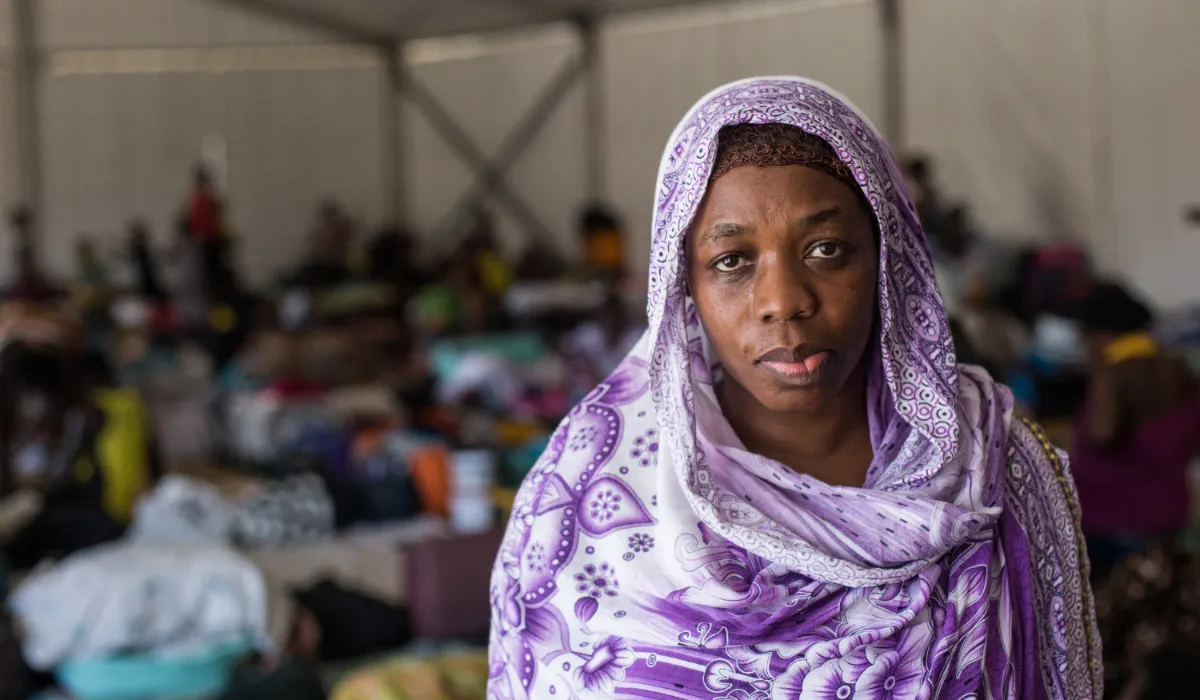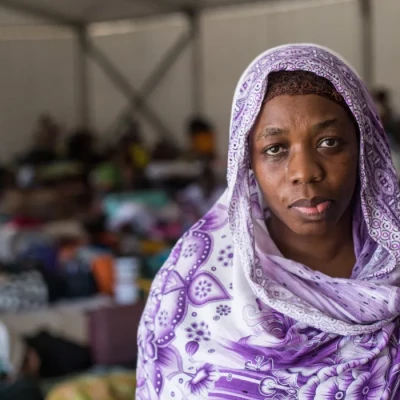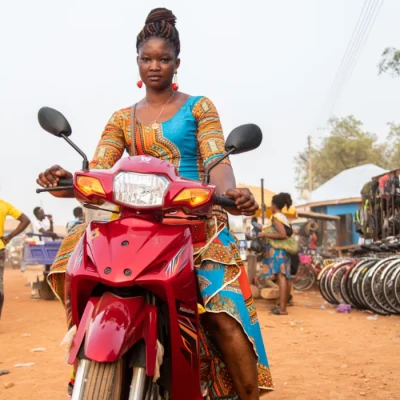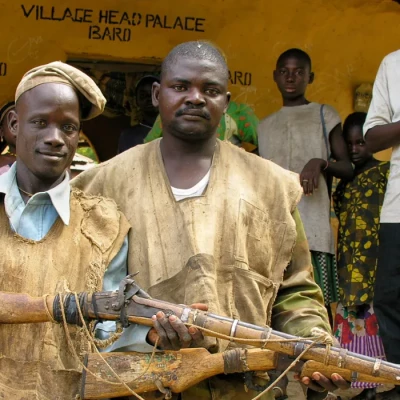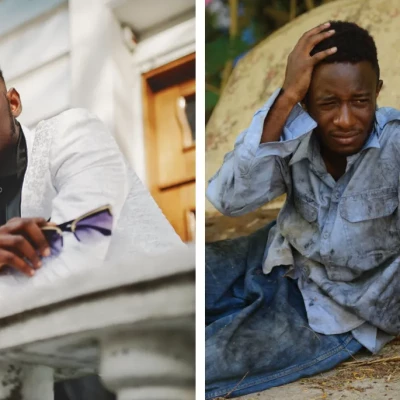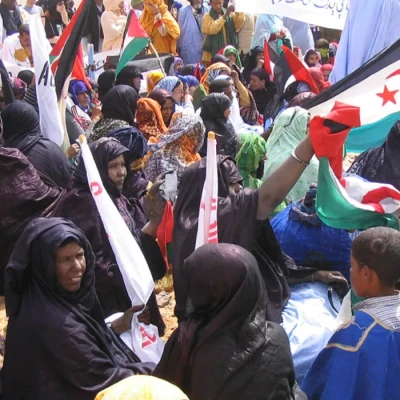Since 1994, South Africa has seen an influx of refugees, asylum seekers, skilled professionals, and socio-economic migrants seeking security and better opportunities. However, this has led to challenges, including xenophobic violence. Despite efforts by civic organisations and the government, the problem persists. Therefore, there is a need for a mindset of peace to address the recurring violence.
This article is concerned with exploring the problem of recurring xenophobia in South Africa by reviewing the approaches that have been followed in response to this phenomenon and proposing an alternative response of involving children in peacebuilding measures. It highlights the importance of empowering children and helping them develop the capacity to become agents of change, and raising them as peacebuilders in the communities where they reside. Underlining the role of educating for peace in transforming human society, it is believed that peace workshops could contribute to preparing young generations for sustaining positive relationships with those considered the ‘other,’ and thus consolidating peace in South Africa.
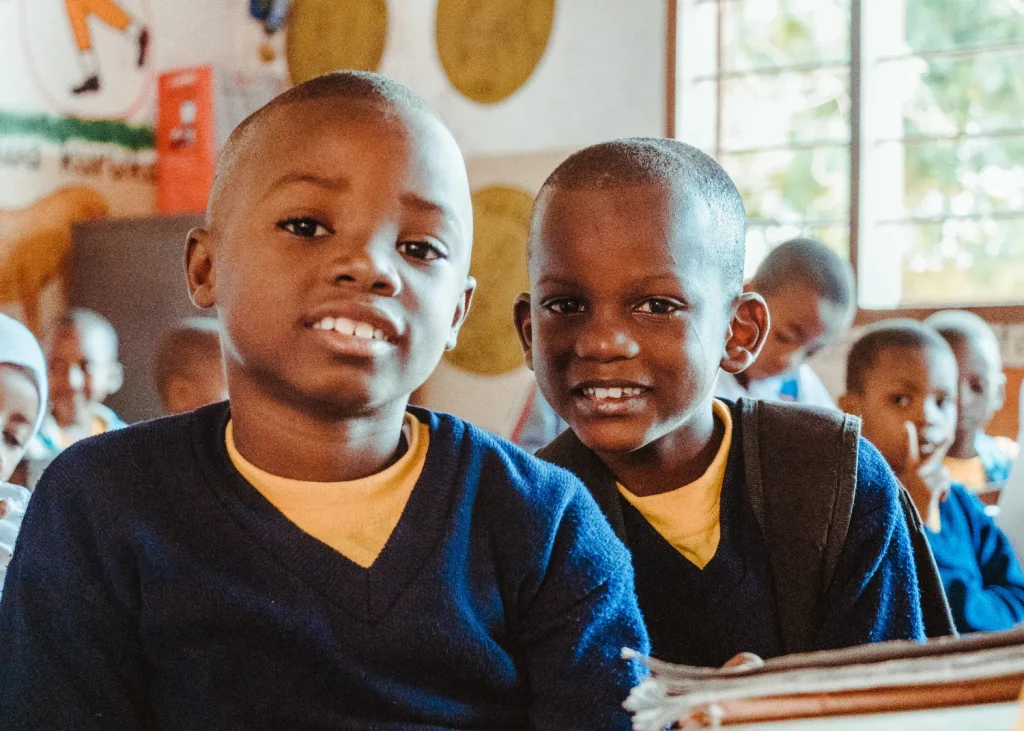
Contextual background
Most previous case studies have drawn attention to the reasons or causes of xenophobia and how xenophobia has manifested itself in the community, workplaces, classrooms and playgrounds. One study, conducted in five schools in Johannesburg’s inner city, looked at the experiences of immigrant learners.1Osman, R. and Kruger, D. (2010) ‘The phenomenon of xenophobia as experienced by immigrant learners in Johannesburg inner city schools’, Perspectives in Education, 28(4): 52–60. The study found that migrant children were regularly subject to derogatory labelling, verbal abuse, and name-calling from fellow pupils. The conclusions show that, in order to address what the immigrant learners experienced, there is a need for anti-xenophobia education, which is not currently covered in the syllabus. In Osman and Kruger’s study, the immigrant participants reported that they received very little compassion from the locals, and they were often humiliated through stereotyping as poor or dirty and by prejudice, bias and discrimination through name-calling.2Ibid.
In another study by Crush and Tawodzera of inner-city Johannesburg and Cape Town focusing on Zimbabwean immigrants, refugee children talked about ‘taunts by teachers in the classroom and by learners [on] the playground.’3Crush, Jonathan and Tawodzera, Godfrey (2014) ‘Exclusion and Discrimination: Zimbabwean Migrant Children and South African Schools’, International Migration & Integration, 15: 677–669. Their study echoes findings from previous research by Osman and Kruger, revealing prejudice towards immigrants regarding hygiene and the perceived length of their stay.4Osman and Kruger (2010) ‘The phenomenon of xenophobia’, op. cit. While this highlights the need to address xenophobia in schools to improve the learning environment, Crush and Tawodzera suggest that simply creating contact between immigrant and local students may not be enough to transform xenophobic attitudes. They emphasise the importance of additional efforts to bridge the gap and foster friendships between the two groups. Zalk et al. conducted a study on the extent to which adolescents and their friends socialise one another’s attitudes towards immigrants.5Van Zalk, Maarten; Herman, Walter; Kerr, Margaret; Van Zalk, Nejra; and Håkan, Stattin (2013) ‘Xenophobia and tolerance toward immigrants in adolescence: Cross-influence processes within friendships’, Journal of Abnormal Child Psychology, 41: 627–639. Adolescence, for the authors, is a critical stage during which attitudes are developed. During the adolescence period, some children adopt tolerant attitudes towards immigrants, and this can assist in preventing racism and violence in societies.
On the other hand, some children develop ‘a negative, xenophobic attitude,’6Ibid. which can encourage violence and aggression against minorities. Zalk et al. indicate that it is, therefore, imperative to understand how xenophobia or tolerance toward immigrants develops and how children can be involved to reduce xenophobia and assist in promoting tolerance. To control for the effects of having immigrant friends, Van Zalk et al. had to have a community sample including both immigrants and non-immigrants to study the impact of contact between the two groups.7Ibid. The findings showed that in adolescent friendships, xenophobia influences and increases prejudice sentiment in others. Stated simply, friends influence each other’s xenophobic attitudes and behaviour. Van Zalk et al. show that friends are important sources of information for political and societal attitudes.8Ibid, p. 627. It is evidenced in their study that friends can promote tolerance as well. This indicates that prevention and intervention efforts should target friendship processes that promote adolescents’ tolerance and thus reduce xenophobic sentiments.
Friendships have the impact of creating social bonds and, in turn, give rise to engagement. If these bonds are non-existent, then ‘there is no prescription to prevent outbreaks of violence.’9Abe, Toshihiro and Katsaura, Obvious (2016) ‘Social Cohesion against Xenophobic Tension: A Case Study of Yeoville, Johannesburg’, African Study Monographs, 37(2): 55–73. Empirical research lends some support to the idea that intergroup contact builds trust, and this helps in reducing negative intergroup attitudes. Positive intergroup contact provides a way to overcome intergroup tensions and reduces out-group prejudice in in-group and out-group members. According to Christ et al., positive intergroup contact brings about reduced prejudice ‘on a macro- and not merely micro level, whereby people are influenced by the behaviour of others in their wider social context.’10Christ, Oliver; Schmid, Katharina; Lolliot, Simon; Swart, Hermann; Stolle, Dietlind; Tausch, Nicole et al. (2014) ‘Contextual effect of positive intergroup contact on outgroup prejudice’, Proceedings of the National Academy of Sciences, 111(11): 3996–4000. Direct positive contact between groups also changes attitudes on a micro scale, and it affects prejudice on a macro level, where people are influenced by the behaviour of others in their social context.11Ibid. Facilitating contact between local and immigrant children is crucial in preventing the recurrence of xenophobic violence in South Africa.
Research methods
An action research approach was used in this research because it provides for both knowledge production and action. Action research is participative and the action part in this research approach was aimed at bringing positive change through the involvement of the participants in their community. The researcher conducted workshops with 15 young adolescents between 12 and 15 years old. The motivation for choosing young adolescents had to do with the fact that they were likely more receptive to change than adults who might have hardened attitudes. The participants engaged in informative and reflective discussions concerning their experiences, and this led to a change in views and thought patterns. After the workshops, the participants, in turn, were able to devise actions which they would embark on in different areas. A limitation is that the study was carried out with a small group of participants, and the results may not reflect the whole community of both foreign and local children.

Findings
Lack of acceptance and belonging
The children of migrants face a major problem of a lack of belonging. They found it difficult to be accepted and to belong within the host country. Some also lack a sense of belonging with their parents’ countries of origin, as they were not born there. Participants explained that they tended to be identified as foreigners by the locals because of their language use (how they pronounce words) or how they dressed. ‘Bodily looks, movements, sounds and smells are legible as evidence of imagined citizenship.’12Mario Matsinhe, D. (2011) ‘Africa’s Fear of Itself: The ideology of Makwerekwere in South Africa’, Third World Quarterly, 32(2): 295–313. Thus, language and accent are crucial signifiers of imagined nativity. As a result, most of the participants usually would not want to wear their country of origin’s traditional dress, as this worsened their position as the ‘other.’ In this context, changing their clothing was a way to disguise themselves, seeking to avoid hostility and gain acceptance. Bhugra and Becker show that there are psychosocial changes that migrants experience, which can include assimilation.13Bhugra, Dinesh and Becker, Matthew A. (2005) ‘Migration, cultural bereavement, and cultural identity’, World Psychiatry, 4(1): 18. This means an individual’s cultural identity may be lost during this period of assimilation. This was observed in this study. The participants appeared to have acculturated involuntarily as a protection measure.
Name-calling and verbal abuse
The research found that it was common for the participants (both local and migrant) to be called derogatory terms. For locals, it was their family who would call them derogatory names. This seemed to have a negative impact on their self-esteem. Migrant participants were generally called such names as kwerekwere. However, it appeared that, unlike the locals, they had developed a thick skin regarding this name-calling. They stated that this name usually associated them with negative behaviours, crime and other social ills. The term kwerekwere connotes ‘a derogatory designation for people from other countries in Africa. It is usually regarded as having an onomatopoeic reference to the un-understandable languages spoken by the foreigners or the way they speak South African languages.’14Field, David N. (2017) ‘God’s Makwerekwere: Re-imagining the church in the context of migration and xenophobia’, Verbum et Ecclesia, 38(1): 1–8. All the migrant participants (100%) indicated that they had, at one point in their lives, experienced verbal abuse such as name-calling. The participants’ experiences reveal that name-calling has a negative impact on both locals and migrants. This behaviour even extends to family members. Interestingly, migrants have begun accepting this name-calling as a normal part of their identity.
Lack of knowledge
Eighty per cent (80%)15Hawke, Franco Vaccarino and Hawke, Emma (2011) ‘How you doing, mate? The perceptions of benefits and barriers in forming friendships with international students: A New Zealand perspective’, Intercultural Communication Studies, 20(2): 177–189. of the local participants lacked knowledge about refugees, asylum holders, permits, and issues on legality. They also demonstrated a lack of understanding of the various reasons that lead one to be called a migrant. This might be because of the age of the participants (12-15 years). The participants were ignorant of the different legal positions of migrants in South Africa. From the discussions with the participants, it was noted that there is even a lack of knowledge on what a refugee is and the differences between them and other immigrants. This lack of knowledge resonates with other literature. The lack of knowledge means that it did not matter whether the presumed migrant was in South Africa legally or illegally. Either way, the hatred was intense, and they were viewed as a threat.
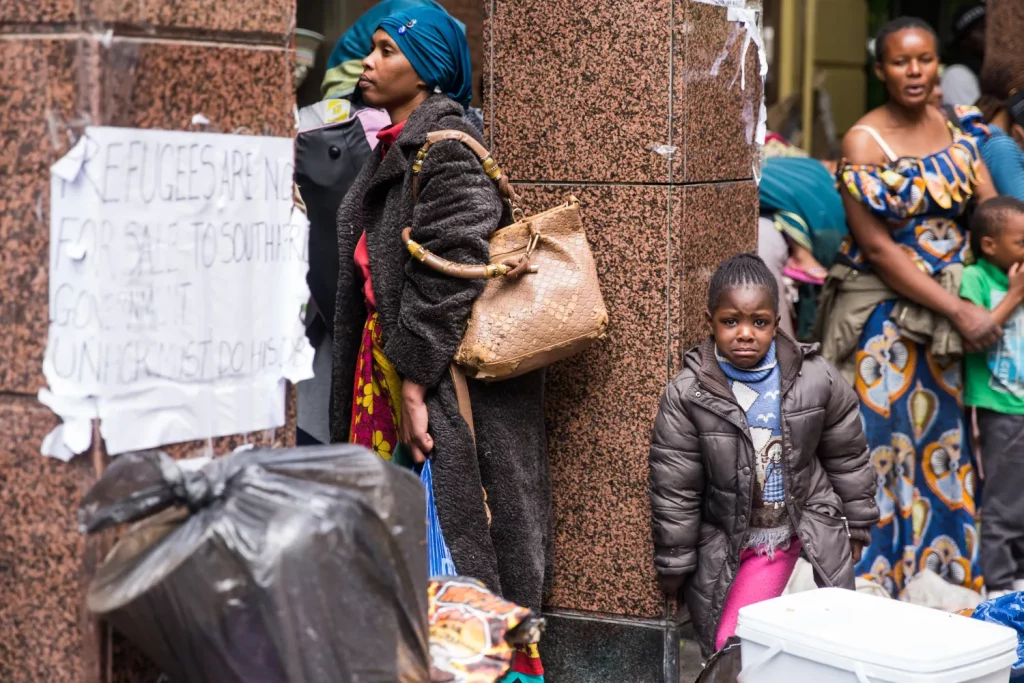
Friendships
Friendships have been described as ‘voluntary and spontaneous’ relationships, and cultural differences can determine the formation of friendships based on values and identity. Two definitions of friendship came to the fore in the participants’ responses. Some in the group described friendship as having someone with whom they could talk every now and again, while others viewed it as having a relationship with someone and being able to do activities together, for example, going to the movies and sharing secrets with each other.16Ibid. Looking at the issue of friendship, 80% of the participants commented that they never truly had a strong friendship with any migrant or local. If they happened to know the person, it was on a general greeting level and nothing more.
The interactions that the participants had were mostly limited to school and religious activities. From the above statements, it seems that the participants felt unwanted, and this hindered the creation of friendships. In addition, language was a barrier and from the study, a lack of ease in communication seemed to be a hindrance in creating friendships. During the training workshop, the standing ground exercise revealed that about 70% of the people in the group shared similar interests, norms, and values. The participants did not realise that they had much in common, and this, from the researcher’s observations, could be a potential place from where friendship could stem. After being asked how difficult it was to make friends with those from their own cultural backgrounds, 75% believed that it was not difficult. This highlighted the importance of participants’ motivation and interest in building friendships with individuals from diverse cultural backgrounds. Additionally, it underscored the need for further efforts to nurture and deepen cross-cultural friendships.
Fear and safety
Issues of safety and fear were recurring themes. All the participants, despite their ethnic backgrounds, showed signs of fear. They highlighted that they were not free to talk in crowds or travel freely using public transport. Constantly, their parents advise them to be vigilant when they go to school or are sent to shops. The study found that in one way or another, all participants (100%) had experienced fear of the ‘other.’ Some were afraid of xenophobic attacks, and others exhibited a fear of being kidnapped or robbed by migrants. Most of them were also afraid of child trafficking.
Negative associations
Interaction with the local children highlighted the fact that in their experience and understanding, they tended to see every foreigner as Nigerian and the negative association of crime with Nigerians as well. This was seen in role play by the children. In the role play, all the participants depicted issues concerning drugs, car theft, rape, murder, and trafficking of people as being mainly perpetrated by foreigners. The role play revealed to the researcher that even at a young age, there was a lack of knowledge, and myths played a significant role in disseminating negative information. The role play also depicted the locals as very violent, and this was seen in the acting of a foreigner being killed, a foreigner burning under a car tyre, and a migrant crying as his shops were being raided by locals.
Upon further interrogation, it was revealed that these negative statements concerning migrants (refugees) in South Africa were derived from the media and from their close family members. The media does not portray positive stories of success, but they do portray immigrants as unwanted economic threats.17Kariithi, Nixon; Mawadza, Aquilina; and Carciotto, Sergio (2017) Media Portrayal of Immigration in the South African Media 2011–2015, Cape Town: The Scalabrini Institute for Human Mobility in Africa (SIHMA). All migrant participants expressed concern over being shown as involved in criminal activities, yet in reality, they themselves did not know anyone who was like that. They agreed that it was possible to have a few bad individuals that could spoil the rest. They highlighted that despite such sentiments, their parents were good members of society. The migrants also attributed negative associations to the locals, most of which revolved around issues of them being too lazy to work, corrupt, alcoholics, and abusive.
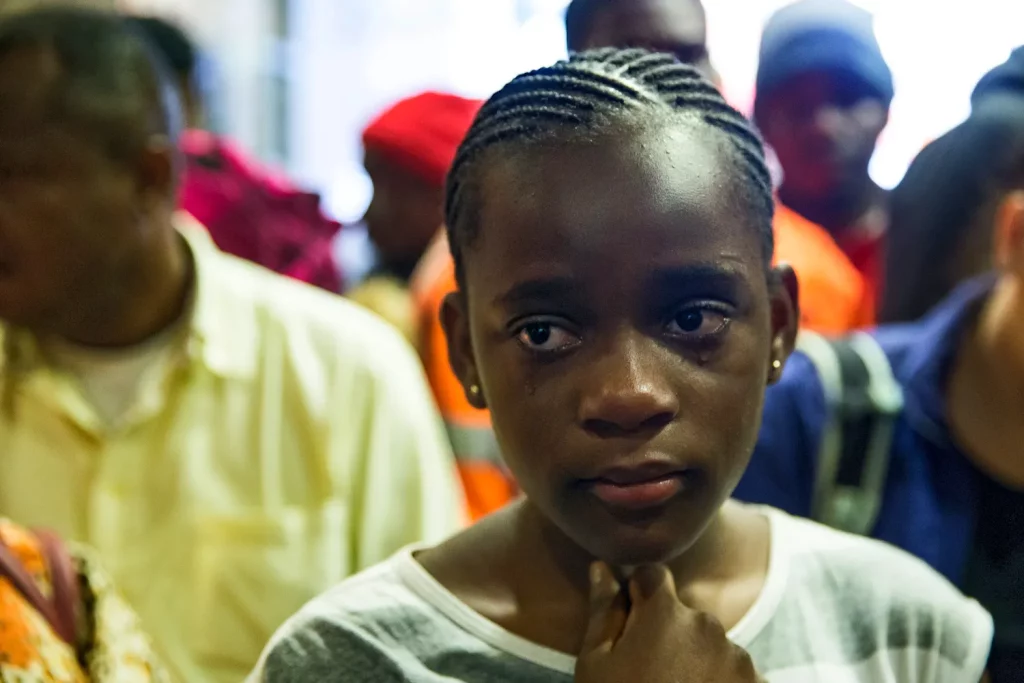
From the researcher’s observations, some participants’ attitudes might have been inherited from their parents and perhaps their communities. It struck the researcher that all the children would highlight issues that are work-related, yet they themselves had not yet worked. This demonstrates that ‘research is correct when it shows that young children learn prejudice through adults’ instruction and these social rules shape children’s understanding of their social worlds.’18Haji, Reeshma and Noguchi, Hiromi (2020) ‘Indirect Contact Interventions to Promote Peace in Multicultural Societies’, In Children and Peace, Cham: Springer, pp. 57–70.
Change in attitude
The researcher found that the programme was effective in improving children’s short-term attitudes, but it cannot be stated with certainty that it impacted long-term attitudes. Some effect on empathy towards each other was also observed.
Conclusion
This article provides a comprehensive understanding of xenophobic violence from the perspective of children. Many migrant participants believe that xenophobic attitudes among local South Africans are deeply rooted, making it challenging to eradicate. The study found that while children are aware of xenophobic acts, they lack the capacity to resist them. It emphasises the need for children not only to recognise but also actively resist such violence. Through workshops and peace initiatives, children can play a significant role in ending xenophobic violence by fostering friendships. Although the research did not immediately result in many friendships, the researcher believes that, given more time, this could have been achieved. Involving children is crucial, as they make up a significant portion of societies and are potential agents for social transformation. The study raises awareness about the importance of involving children in combating xenophobic violence and equipping them with the mindset to reject negative attitudes. The main contribution is perhaps the awareness raised on involving children and helping them grow up with a commitment to disassociate themselves from xenophobic practices.
Dr Ruth T. Nyamadzawo is a post-doctoral fellow of the School of Law, University of KwaZulu-Natal.

